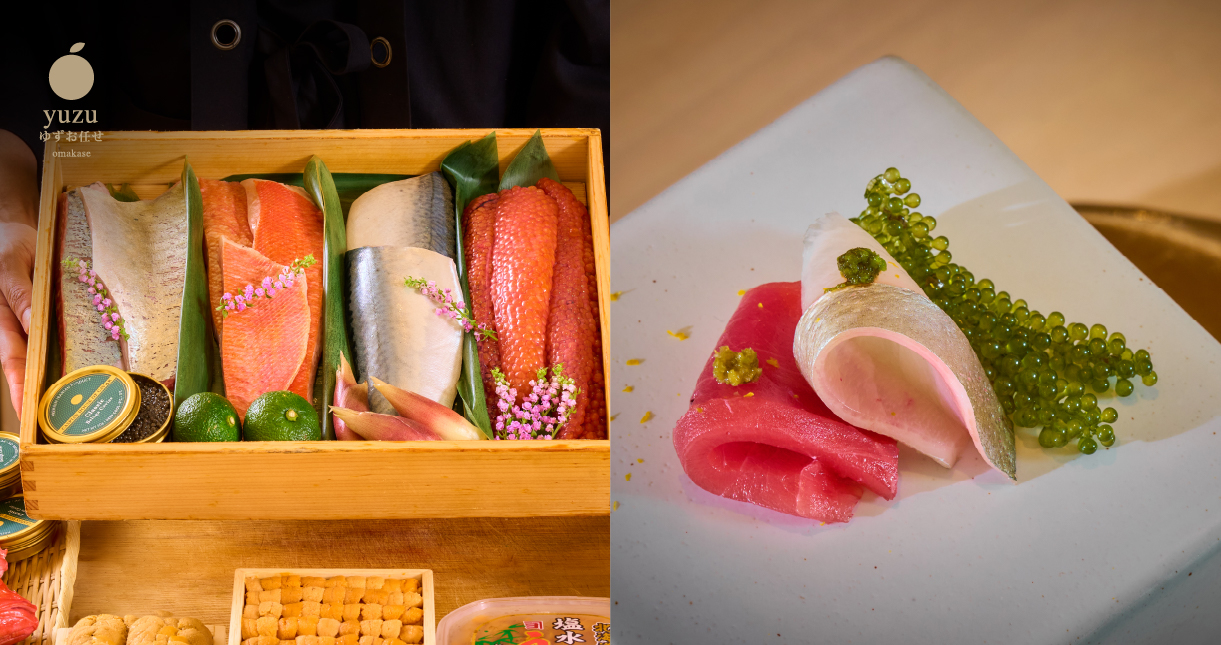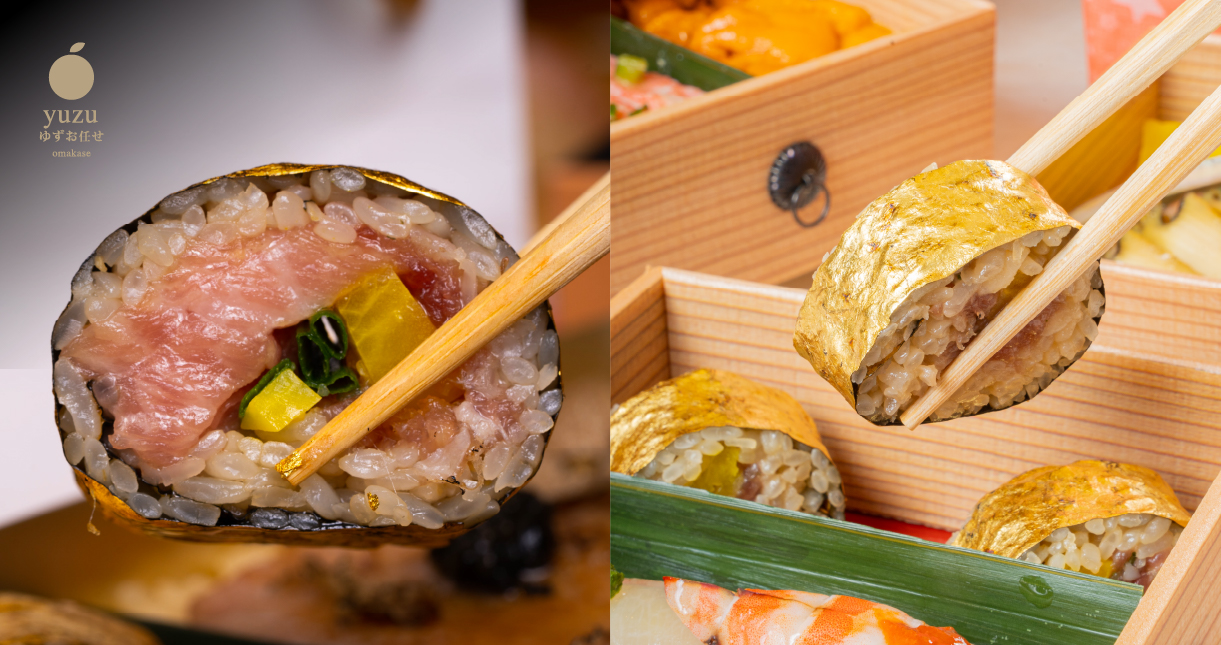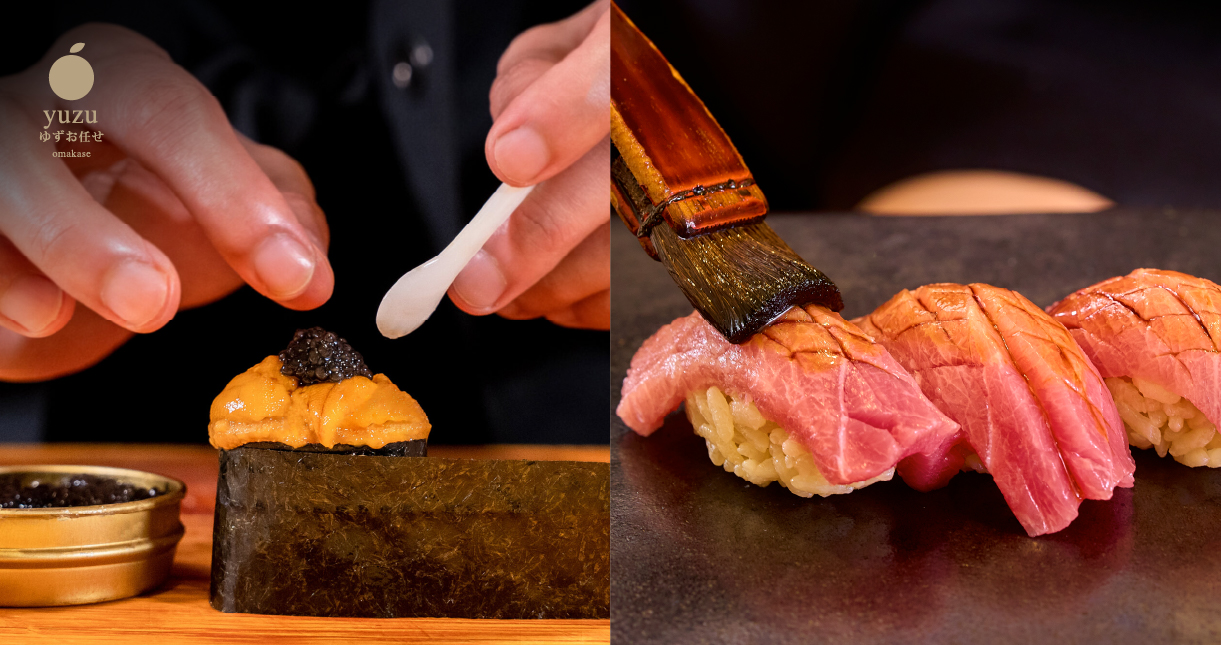
Sushi Around the World: How Traditional Japanese Sushi Transcends Borders
The Global Journey of Sushi Sushi, one of the most iconic elements of Japanese cuisine, has grown from its humble beginnings in Japan to become a global culinary phenomenon. Over the years, sushi has been adapted and reimagined in different countries, blending local flavors and preferences with traditional Japanese techniques. While some restaurants focus on creative fusion, others, like Yuzu Omakase, remain committed to preserving the authenticity and tradition of Japanese sushi.
The World ● 2024 Dec 18
Sushi Around the World: How Traditional Japanese Sushi Transcends Borders
This article will explore how sushi has been adapted around the world and how Yuzu Omakase stays true to its Japanese roots, offering an authentic omakase experience in Bangkok that honors the time-honored techniques of Japanese sushi-making.
1. Sushi’s Origins: A Brief History

Sushi, as we know it today, traces its origins back to Japan, where it was initially developed as a way of preserving fish through fermentation with rice. Over time, sushi evolved into a delicate art form, with nigiri, sashimi, and maki rolls becoming staples of Japanese cuisine. The focus on fresh, high-quality ingredients, precision in preparation, and balance of flavors are central to traditional Japanese sushi-making.
Key Elements of Traditional Japanese Sushi
Nigiri
A slice of fresh fish or seafood placed on top of a small mound of seasoned rice, often garnished with wasabi or soy sauce.
Sashimi
Thinly sliced raw fish or seafood, served without rice, allowing the quality of the fish to shine.
Maki Rolls
Sushi rice and ingredients like fish or vegetables rolled in nori (seaweed), cut into bite-sized pieces.
While sushi has its roots in Japan, it has since spread across the globe, taking on new forms and flavors along the way.
2. How Sushi Has Adapted Around the World

As sushi gained popularity outside of Japan, different countries began to adapt the traditional dish to suit local tastes, creating unique fusion sushi that reflects regional flavors and preferences. Here are some examples of how sushi has evolved in various parts of the world.
Sushi in the United States: The Birth of Fusion Sushi
In the United States, sushi has seen some of the most significant adaptations. California rolls—a sushi roll filled with crab, avocado, and cucumber—are among the most famous creations, appealing to American palates with ingredients that are less exotic than raw fish. Additionally, rolls featuring cream cheese, spicy mayo, and tempura have become popular across the U.S., often featuring bold, non-traditional flavors.
Popular Sushi Rolls in the U.S.
California Roll
Crab, avocado, and cucumber, often with a sprinkle of sesame seeds or tobiko.
Philadelphia Roll
Salmon, cream cheese, and cucumber, offering a rich and creamy texture.
Spicy Tuna Roll
Tuna mixed with spicy mayo, often combined with avocado or cucumber.
Fusion sushi has become a hallmark of the American sushi experience, where chefs experiment with ingredients like mango, jalapeños, and even barbecue sauce.
Adaptation Highlight
Sushi in the U.S. focuses on bold flavors and unique combinations, often far removed from the simplicity and elegance of traditional Japanese sushi.
Sushi in Europe: A Blend of Elegance and Innovation
In Europe, sushi has developed a reputation for being both trendy and refined. In countries like France and the United Kingdom, sushi is often served in upscale, minimalist restaurants, with an emphasis on presentation and innovation. European sushi tends to favor lighter, more refined flavors, often incorporating local seafood and seasonal ingredients.
While European sushi restaurants often stay true to Japanese techniques, they are not afraid to introduce innovative elements such as foie gras, truffles, or local cheeses, blending Japanese tradition with European luxury.
Popular European Sushi Trends
Foie Gras Nigiri
A luxurious twist on traditional nigiri, replacing fish with foie gras.
Truffle Maki
Sushi rolls enhanced with the earthy aroma of truffle oil or fresh truffles.
Adaptation Highlight
In Europe, sushi is often a blend of elegance and innovation, focusing on luxurious ingredients and artistic presentation.
Sushi in Southeast Asia: Fresh Flavors with Local Influence
In Southeast Asia, sushi has been embraced with a focus on fresh, tropical flavors that complement the region’s vibrant food culture. In countries like Thailand, sushi often incorporates local seafood and exotic fruits like mango or dragon fruit. These regional variations celebrate the bounty of the local waters while staying true to the Japanese principles of freshness and simplicity.
Popular Southeast Asian Sushi Trends
Mango Rolls
Combining fresh mango with seafood for a sweet and savory flavor profile.
Tuna and Pomelo Sashimi
A refreshing twist on sashimi, pairing local pomelo with fresh tuna.
Adaptation Highlight
Sushi in Southeast Asia reflects the region’s emphasis on freshness and tropical flavors, bringing a local twist to the traditional sushi experience.
Sushi in Brazil: Tropical and Vibrant
Brazil is home to one of the largest Japanese populations outside of Japan, which has had a significant influence on the country’s cuisine. Brazilian sushi is known for its tropical and vibrant approach, often incorporating fruits like passion fruit, mango, and pineapple into sushi rolls. Additionally, Brazilian sushi often features cream cheese and fried tempura for a richer, more indulgent flavor profile.
Popular Brazilian Sushi Creations
Hot Rolls
Sushi rolls that are deep-fried in tempura batter, giving them a crispy outer layer.
Passion Fruit Sauce
A sweet and tangy sauce made from fresh passion fruit, drizzled over sashimi or sushi rolls.
Adaptation Highlight
Brazilian sushi is a tropical fusion that blends traditional sushi techniques with local fruits and bold flavors, creating a vibrant and unique take on the dish.
3. Yuzu Omakase: A Commitment to Authentic Japanese Sushi in Bangkok

While sushi has been adapted in many creative ways around the world, Yuzu Omakase remains committed to offering an authentic Japanese sushi experience in the heart of Bangkok. By focusing on traditional techniques and premium ingredients, Yuzu Omakase offers a dining experience that stays true to the roots of sushi while delivering the highest standards of fine dining.
The Art of Omakase: A Personalized Journey
At Yuzu Omakase, the dining experience centers around the traditional Japanese concept of omakase, where diners entrust the chef to create a personalized menu based on the freshest ingredients available. The chef selects each piece of sushi and sashimi with care, offering diners an intimate and authentic journey through Japanese cuisine. Every detail, from the precise slicing of the fish to the balance of flavors, reflects the time-honored techniques of sushi-making.
Omakase Highlight
Yuzu Omakase’s chef-curated omakase menu offers a truly authentic sushi experience, combining craftsmanship with the freshest seasonal ingredients.
Premium Ingredients Sourced from Japan
What sets Yuzu Omakase apart from other sushi establishments in Bangkok is its dedication to using premium ingredients sourced directly from Japan. From Hokkaido sea urchin (uni) to the finest cuts of otoro (fatty tuna), every dish at Yuzu Omakase highlights the quality of the seafood. The emphasis on freshness ensures that each bite captures the essence of traditional Japanese sushi.
Ingredient Highlight
Yuzu Omakase’s focus on high-quality, seasonal ingredients from Japan ensures an authentic sushi experience that honors the traditions of Japanese cuisine.
Zen-Inspired Ambiance for a Tranquil Experience
In keeping with its commitment to authenticity, Yuzu Omakase offers a Zen-inspired dining environment that reflects the principles of Japanese minimalism and tranquility. The serene atmosphere allows diners to fully appreciate the artistry and precision that goes into each course, making it more than just a meal—it’s a sensory journey.
Ambiance Highlight
Yuzu Omakase’s Zen-like decor provides a calming backdrop for an immersive and authentic omakase experience.
Conclusion: Sushi’s Global Journey and the Authenticity of Yuzu Omakase

While sushi has been adapted in creative ways across the globe, from the fusion rolls of the U.S. to the luxurious twists of Europe, the essence of traditional Japanese sushi remains at the heart of the cuisine. At Yuzu Omakase, diners can enjoy an authentic omakase experience that honors the roots of Japanese sushi-making, with a focus on premium ingredients, expert technique, and a tranquil dining environment.
For those seeking a truly authentic sushi experience in Bangkok, Yuzu Omakase offers a luxurious escape into the world of traditional Japanese cuisine, staying true to the art of sushi in its purest form.
Ready to experience the best of traditional Japanese sushi? Book your seat online at Yuzu Omakase and embark on a culinary journey that transcends borders.

RELATE







